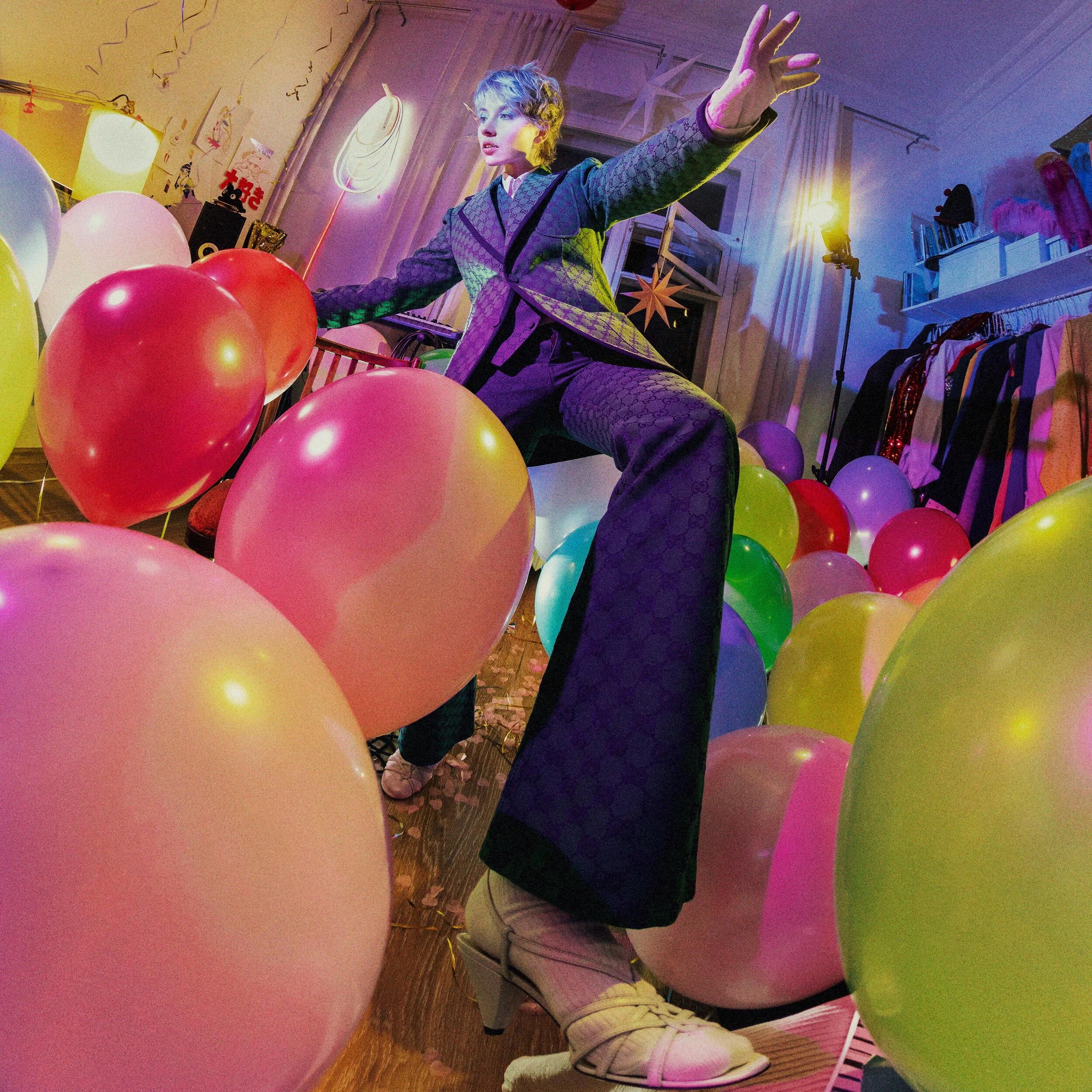Challenges faced by the fashion industry in post-Brexit Britain.
As we enter the second half of 2021, the questions around Brexit’s impact on the British fashion industry have become more urgent than ever. To discover the full effect of the UK’s departure from the European Union on the industry, Philip Livchitz explores key areas of focus, what actions are being called for by the relevant stakeholders, and who holds the power necessary to advance the industry’s position both domestically and abroad.
Fashion and politics have a lengthy history of overlapping and intersecting, thus affecting each other on a much deeper level than we might care to admit. Rulers, politicians and state representatives have long incorporated sartorial symbols to communicate ideological values and beliefs to the world. One need look no further than President Biden’s inauguration on the 20 January to see the significance of sartorial choices and the messages such choices convey. History is full of such examples, from Marie Antoinette to Princess Diana to Vice President Harris.
There are moments in history, however, when the industry producing such wonderful garments becomes heavily impacted by the very people wielding them as sartorial tools. While such disruptions are not novel in any way, they always carry short- to medium-term ramifications affecting not only those working in the industry but also the customers across the board. The UK officially leaving the European Union on the 31st December 2020 became the latest incident in the history of such disruptions, with far-reaching consequences across its services sector, from fashion to financial services.
In the world of known knowns, known unknowns, and unknown unknowns – a term known as the Johari window, coined by two American psychologists Joseph Luft and Harrington Ingham in 1955 – we are sitting tightly in the middle in terms of Brexit’s effects on the fashion industry in the UK and its position on the global stage. There is acknowledgement and understanding of what the challenges are. It is, however, still unknown as to what measures will be taken by the UK government to avail the British fashion industry of the shackles placed around it –shackles that have been strengthened further by Covid-19.
Looking back to May 2016, the prospect of Britain voting to leave the EU seemed distant. A lot of people, myself included, were confident that the UK would remain in the EU with all four freedoms – free movement of goods, persons, capital, and freedom to establish and provide services – indelibly intact. Unfortunately, that was not the case. Seeing the results of the vote the next day left me bewildered and, frankly, worried. My sentiments were (not surprisingly) reflected across a number of industries ranging from financial services and music to fashion. After all, at the time of the vote, the UK had been an EU member state for nearly 45 years, meaning its businesses had forged long-lasting links with its continental counterparts, much of which relied on the frictionless trade in goods and services. In those 45 years, the world had become much more interlinked and connected, so reversing that period of history seemed, for the lack of a better term, impracticable. The British fashion industry agreed as much.
Initially the concern of the industry focused on the consequences of a ‘no-deal’ Brexit and the potential negative impact on the British fashion resulting from it, as outlined in the British Fashion Council (BFC) report from September 2019. But once a deal was reached with the EU by the UK government at the end of 2020, it became glaringly apparent that this was nowhere near sufficient in addressing the realities the industry was faced with. In a year that saw the world swept by Covid-19, wreaking havoc on global fashion and textile industries, Brexit was seen as adding insult to injury, scuppering the faintest hopes of recovery in an industry that employs nearly one million people.
In 2020, it was estimated that the fashion industry contributed £35 billion to the British economy, which is more than the film, music, fisheries and automotive industries combined. Yet for the most part its worries remained unaddressed by the UK government, which appeared to rally all of its support behind the fisheries industry of 12,000 people contributing a mere 1.4 per cent to the country’s GDP.
In reviewing the above numbers, I’m conscious that bigger British brands with a significant global presence, such as Burberry, Victoria Beckham, Vivienne Westwood, and Alexander McQueen, while not being safe from the dual effects of pandemic and Brexit, are in a better position to deal with the negative impacts to their businesses compared to the likes of Ahluwalia, Bianca Saunders, Bethany Williams and Roksanda. If established British luxury brands such as Ralph & Russo and Amanda Wakeley have gone into administration this year, it raises questions as to what the industry landscape will look like if concrete actions are not taken by the British government. Even the 11th-hour Brexit deal has raised a number of new concerns across the full spectrum of the industry.
Given the late negotiation of the EU-UK Trade Negotiation Agreement, everyone has had to adapt to new rules overnight, creating tremendous challenges for both industry professionals and customers alike. These challenges, however, have been directly raised and brought to the attention of 10 Downing Street. Fashion Roundtable, a leading industry think-tank, addressed the government earlier this year through an open letter, urging it to provide support to the fashion industry. The letter was signed by over 450 leading industry professionals including designers Dame Vivienne Westwood DBE and Katharine Hamnett CBE, photographers Juergen Teller and Nick Knight OBE, Vogue editors Laura Bailey and Sarah Mower MBE, as well as models Yasmin Le Bon and Alexina Graham. The high-profile signatories’ involvement emphasised the necessity for a robust and proactive government response to the issues and concerns outlined by those who have put the UK on the world map through their concerted efforts – both domestically and internationally.
The government’s response, which came nearly three weeks after the initial letter was sent, stated that they are ‘operating export helplines, running webinars with policy experts’ to support businesses experiencing trade challenges with the EU while advising the Fashion Roundtable to liaise with the British Fashion Council (BFC) to have their views presented before a working group led by the Department for Digital, Culture, Media and Sport. While arguing the merits and adequacy of the above response seems unnecessary (mostly due to their absence), it displays a genuine lack of understanding of the inner workings and misconceptions held by the government about the industry.
In light of the government’s response, the letter was subsequently followed up by a Fashion Roundtable report published in early May on the negative impacts of Brexit on the industry. The report outlined 11 recommendations, including the re-establishment of the VAT Retail Export Scheme to international customers in the UK; provision of tax relief to the industry commensurate to what has been offered to fisheries; reconsideration of visas for fashion creatives; securing cabotage exemptions for creatives; adding skilled garment workers to the Shortage Occupation Visa List; ensuring the frictionless movement of samples and goods; and creating clarity on unregistered design rights as well as building a robust IP rights framework into all future trade deals.
Unsurprisingly, this report by Fashion Roundtable revealed what had been long-suspected by those working in the industry: the material and quantifiable impacts of Brexit. The principle results outlined the following data: 59 per cent of participants surveyed stated that Brexit had negatively impacted their business since the end of the transition period; 77 per cent stated they expected to be affected post-lockdown; 25 per cent considered relocating all or parts of their business to the EU; 91 per cent said they would like to have simpler and quicker visa access; 39 per cent would localise their manufacturing should they be offered tax relief. It must also be borne in mind that 90 per cent of the UK’s fashion businesses are small and medium-sized enterprises, as stated in the report.
In light of the above, the government’s response to the initial letter must be considered in the wider context of it equating the fashion industry with its most visible representatives – the designers – without much consideration to the rest of the industry that allows designers’ visions to come to life. Behind each designer is a great number of people that contribute to the end result seen in collections, editorials, events and campaigns. These people, through their own distinctive mastery, creativity, and craft, add their own unique touches to designers’ ideas. To use an analogy borrowed from the human anatomy: if the designer is the brain (and quite often the heart), the teams are the limbs and supporting organs that bestow the body with the ability to transform the designer’s ideas into wonderful concoctions – be it incredible maquillage complementing an eye-catching haute couture dress on the runway (think Christian Dior couture, autumn 2002), a gigantic pouffe adding a layer of nobility to an editorial look, or an immaculately fitted elegant ballgown worn on the red carpet; the contribution of hair stylists, make-up artists, models, photographers, milliners and their assistants all bring designers’ ideas to the fore.
In addition, that response did not take into consideration the nature of the industry and the way creatives may easily be booked for a job on very short notice – often 24 hours, or even less. This is further compounded by the fact that when planning for an editorial shoot, one needs to receive the requested garment samples (preferably) in advance before packing everything for a shoot taking place in the EU. I vividly remember flying from London to Berlin at 48 hours’ notice to assist on a spring/summer 2019 shoot for a London-based magazine, only to return to London two days later with the task of returning all the samples to the press agencies and designers. Currently, such arrangements are made much harder with obligatory visa requirements, cabotage rules and ATA carnets necessitating detailed inventory lists of each clothing sample, pieces of make-up, or items found in the hair kit – I’ve heard enough stories from friends and acquaintances who have had to list each make-up colour palette or every single type of brush found in their kits separately when travelling for jobs to Paris.
These complications are not only time-consuming, they also make it easier for European brands to focus on European talent instead, which has a real consequence of negatively impacting the British economy through income repatriation and the taxes paid. It must be noted that the UK is home to world-class creative talent with tremendous demand abroad from stylists to models. In light of the ongoing pandemic, the taxable income generated by such talent will inadvertently fall even further should the situation remain unsolved for a considerable amount of time.
Industry professionals, however, are only one side of the coin (albeit a very significant side.) Consumers have also had their options narrowed due to the rising costs passed down by retailers, designers and online platforms. This has been visible through the rapid increase of e-commerce and online platforms, propelled by the closure of physical retail spaces. With most sales moving online, British retailers and designers exporting to the EU may now face taxes and tariffs rising to nearly 30 per cent of the product price, making it difficult for European consumers to justify the exorbitant fees added to their purchases from UK-based online retailers such as Farfetch and Matches Fashion. To circumvent these fees, the Department for International Trade has advised businesses to relocate to the EU, therefore undermining the whole purpose of Brexit; creating jobs and generating income abroad are hardly the consequences intended by the grand architects of the idea of leaving the trade bloc.
The negative impact on consumers has been exacerbated further by Downing Street’s decision to rescind the VAT waiver applied to purchases made in the UK by an international clientele. Prior to January 2021, non-EU customers could usually claim a 20 per cent VAT off their purchases made in the UK, contributing heavily to the UK economy across retail and hospitality. As it currently stands, the UK is the only country in Europe not offering tax-free shopping to overseas clients, meaning there is a genuine risk that spending will be diverted to Paris or Milan. The consequence of falling out favour with international clients is highly likely to risk further job losses across retail – 41,000, to be precise, according to the Fashion Roundtable’s May report.
The most burning question arising out of the current situation is: what can be done to mitigate the dual damage created by Brexit and the pandemic and invigorate the British fashion industry? While the answer to this is relatively simple – namely, direct government involvement and creating a dialogue between key stakeholders and their representatives – the practicalities behind this make it an incredibly slow process tangled in a web of bureaucracy.
To date, the UK government still hasn’t taken any concrete measures to either address the 11 recommendations raised by the Fashion Roundtable or outlined any genuine steps resulting from its weekly discussions with the BFC. With half of the year gone already, the call for action has fallen to deaf ears.
Ultimately, it is the British government that holds the key to unlocking the cuffs placed around the fashion industry’s ability to thrive domestically and globally. Unless the government takes urgent action, the industry may be faced with a situation akin to that of Marie Antoinette towards the very end of her reign – a fate to be avoided at all costs.









